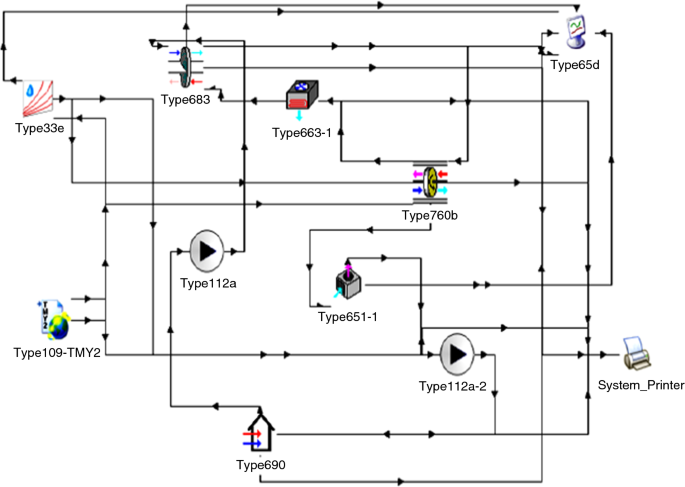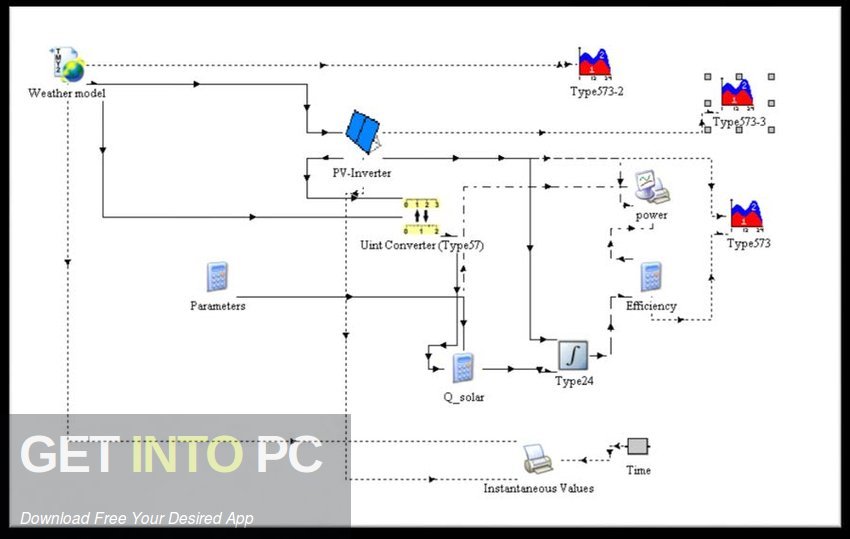
TRNEdit also serves as the editor for manually generating stand-alone distributed TRNSYS simulations called TRNSED applications. However, the TRNSYS environment still includes TRNEdit, a full-featured text editor for writing and viewing TRNSYS input and output files and for running parametric TRNSYS simulations.
#TUTORIAL TRNSYS 16 MANUAL#
The addition of the Simulation Studio in the mid-1990s greatly reduced the need for manual editing. Historically, the text-based TRNSYS input file was generated manually. TRNBuild allows the user great flexibility in editing wall and layer material properties, creating ventilation and infiltration profiles, adding gains, defining radiant ceilings and floors, and positioning occupants for comfort calculations. TRNBuild is an interface for creating and editing all the non-geometry information required by the TRNSYS Building Model.

With the release of version 17, TRNSYS included TRNSYS3D - a plugin for Google SketchUp ™ that allows the user to draw multizone buildings and import the geometry (including building self-shading and internal view factors for radiation exchange) directly from the A powerful SketchUp interface into the TRNSYS Building Environment (TRNBuild).

Output devices also allow the user great flexibility in integrating, printing, and reporting any component output value. Users can watch the value of ANY system variable on an online plot as simulation progresses (any temperature, flow rate, heat transfer, etc.). Since its inception in the mid-1990's, Simulation Studio has replaced the need to manually edit the text input file. The outputs of one component are graphically connected to the inputs of another. The TRNSYS Simulation Studio serves as a robust, Intuitive, graphical front end of the simulation, making the user's job of assembling a detailed system and a simple endeavor - similar in nature to hooking up the pipes and wires in a real system. Coupled Multizone Thermal / Airflow Modeling Building Simulation (including LEED Energy Modeling) Due to the wide user-base, the tool's long history and its inherent flexibility, it is actively used in many of the following applications: TRNSYS has an extensive cross-section of users worldwide that spans from researchers to consultants, engineers to building simulation experts, and students to architects.
#TUTORIAL TRNSYS 16 SOFTWARE#
Models are constructed in such a way that users can modify existing components or write their own,Īfter 35 years of commercial availability, TRNSYS continues to be a flexible, component-based software package that accommodates ever-changing needs of both researchers and practitioners in the energy simulation community. The standard library includes approximately 150 models ranging from pumps to multizone buildings, wind turbines to electrolyzers, weather data processors to economics routines, and basic HVAC equipment to cutting edge emerging technologies. The second part of TRNSYS is an extensive library of components, each of which models the performance of one part of the system. The kernel also provides utilities that (among other things) determine thermophysical properties, invert matrices, perform linear regressions, and interpolate external data files. The first is an engine (called the kernel) that reads and processes the input file, iteratively solves the system, determines convergence, and plots system variables.

In other words, TRNSYS is a prime simulation program in renewable energy engineering and building simulation that is used to design a passive and active solar system.

The standard library includes about 150 different models of pumps, air conditioning equipment, heat exchangers, humidifiers, wind turbines, fans, valves, climate data processing, HVAC equipment (technology suite? Heating, ventilation and ventilation systems) and so on. The second part of TRNSYS Book There is a wide range of components, each of which models the function of a part of the system. In addition, the core provides users with other functional capabilities such as specifying thermo-physical properties, reversing the matrix, performing linear regression, and adding external data files. The first part of a motor is called the kernel, and the task of reading and processing input files, solving the system in a duplicate, determining the convergence, and drawing the system variables. While the vast majority of simulations focus on the evaluation of the performance of thermal and electrical energy systems, TRNSYS can be used to model other dynamic systems, such as traffic flow, or biological processes. TRNSYS is a highly flexible graphic software used to simulate the behavior of transient systems.


 0 kommentar(er)
0 kommentar(er)
